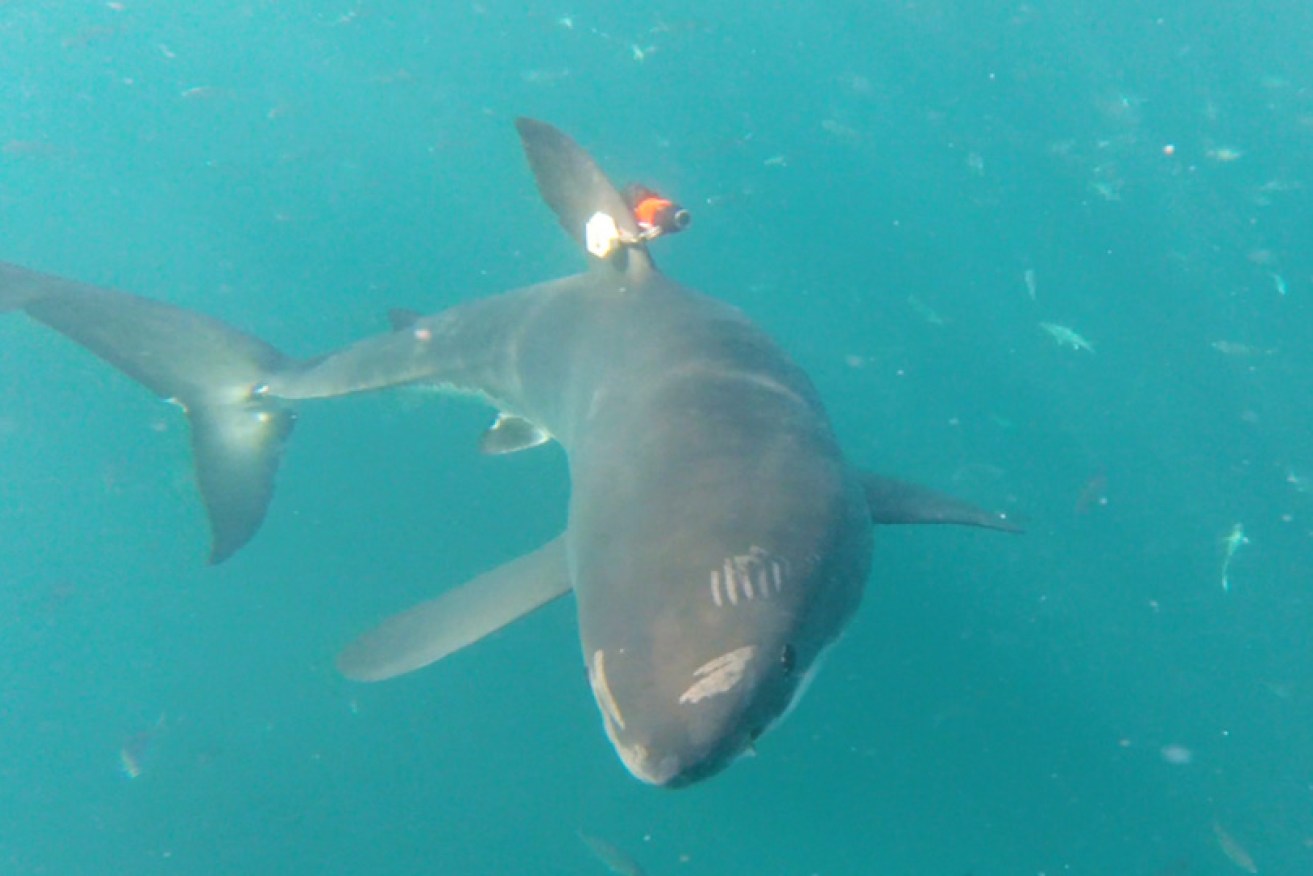Riding shotgun: Watch as a great white shark stalks its prey through a kelp forest

One of the tagged great white sharks from the research project. Photo: Oliver Jewell
This shark is going where many thought no sharks would go: on a daytime swim through a kelp forest to chase seals she wants to eat. As the seals evade her, the shark charges deeper into the forest.
She zigzags through gnarled seascape that eventually snags the camera from her fin — and then the footage stops.
We’re used to the idea of sharks as predators in the open ocean, not creatures that stalk seals through tangles of sea grass.
Shark cams capture great whites hunting in kelp for the first time from Murdoch University on Vimeo.
“People would anecdotally say the sharks won’t swim into the kelp, not the great whites,” said Oliver Jewell, a doctoral student at Murdoch University in Australia.
Great white sharks typically hunt at dusk or dawn, near the ocean’s surface, and will jump out of the water to snag cape fur seals — just like on TV. But in the middle of the day, cage divers and researchers near Dyer Island Marine Reserve, off South Africa’s west coast, had noticed sharks lurking in areas close to the island’s cape fur seal colonies, which are surrounded by kelp forests.
They assumed the sharks, too big to manoeuvre through the dense vegetation, avoided the kelp forests where seals hide. But this footage reveals there’s more to a sharks’ predatory strategy than previously known.
“We kind of thought they would wait for the seals to come out of the kelp but no, they’re not that patient,” Mr Jewell said, who led the research that captured this footage, which was published in Biology Letters.
“They want to go in and find them.”
Tweet from @RSocPublishing
In other well-studied white shark populations in South African waters, sharks aren’t found near kelp, because there isn’t much kelp. But here, mixing oceans stir up nutrients so kelp — and the animals it feeds — thrive.
When Mr Jewell worked in this area in the past, he could only see sharks at the surface or track their movements by following the ping of an acoustic tag. Near kelp forests, he almost always lost the signal. So to find out what the sharks truly were doing during lunchtime, he and his team attached sensors and cameras to their dorsal fins.
Clamping a camera onto a shark fin is about as easy as suctioning one to a whale’s back — and bloodier, with more teeth.
In a small boat, one person stirred up chum in the water to lure in the shark. Mr Jewell stood at the boat’s side, dangling a fish head from a rope. If they were lucky, this brought a shark close enough to a third person who was laying on his belly, holding a long pole with the tag on a spring clamp that he attached to the shark.
After that, the team hoped for a tag that stayed on, as well as some visibility and an interesting shark. Then they hoped to retrieve the tag. After three years they finally captured this footage and more from a total of eight sharks.
“It was just relief,” Mr Jewell said.
Researchers can now better understand how sharks use these environments for hunting and find new ways to conserve this rare and vulnerable apex predator. And Mr Jewell hopes this footage will change people’s Hollywood perception of the great white.
“People think sharks are mindless killing machines,” but that’s not how they behave in the wild, he said.
“They’re very calm and they’re also curious animals, and they’re just there doing their own thing.”
So, then, what about the seals?
They were spotted 10 minutes later and never seen again. Perhaps they got away, but you’d have to ask the shark.
-NYT








